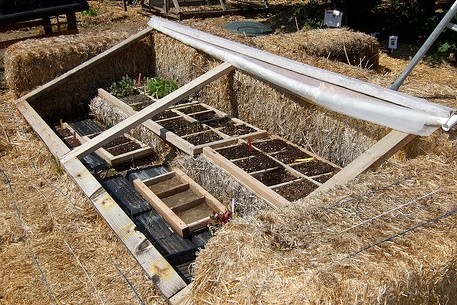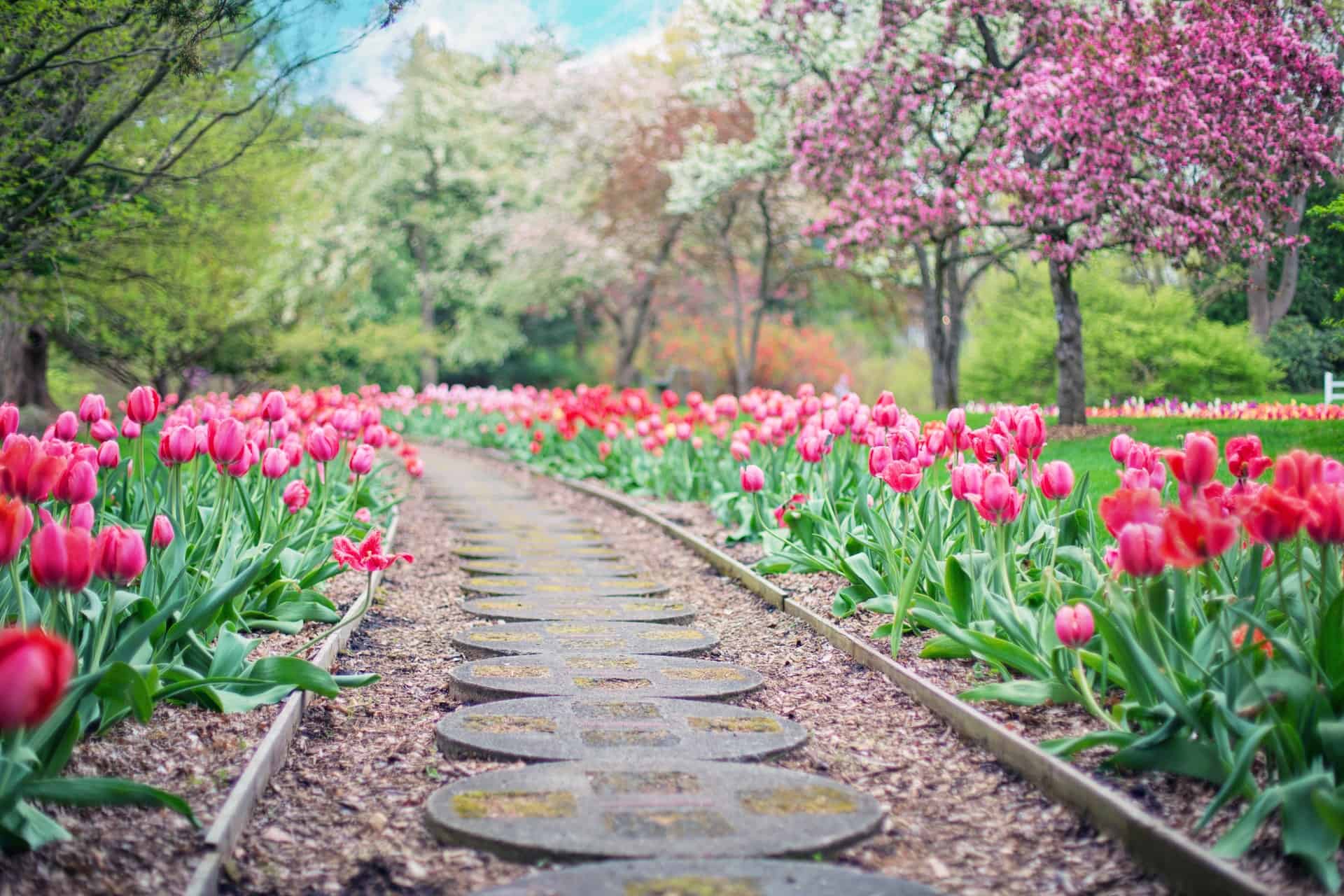Even for creative gardeners, a small space can feel limiting. A compact garden limits your options for planting and landscaping. Here I explain ways to maximize space in your garden, whether you have an urban balcony, suburban backyard, or expansive rural property.
One of my favorite ways to maximize space is to use the square foot gardening method. This allows you to grow as many plants as possible in a 12×12 inch space. How many plants you plant depends on what you are growing.
Another tip is to use companion planting. As an example, planting tomatoes with basil will help the plants thrive.
Gardeners need to use their space efficiently to get the maximum yield from it, especially when growing herbs, fruits, and vegetables.
No matter the size of your gardening area, there are creative ways to maximize every square inch and turn a small space into a thriving green haven.
Keep reading to learn five of the best ways to make the most of your garden space.
Ways to Maximize Space in Your Garden
1) Take Advantage of Vertical Gardening
You’re not limited to the ground when it comes to gardening. Vertical gardening can revolutionize how you use your garden space, especially when it comes to growing food.
Use a trellis
Using trellises, you can transform even the smallest gardens into productive areas.
Set up trellises for climbing beans, such as pole beans, snow peas, snap peas, vining tomatoes, vining cucumber varieties, and grapes. Strawberry plants also grow well with structures.
Hanging containers and pots
You can hang containers and pots from a covered patio, from the walls of your home, or along fences. Hang strawberries in pots and planters. You can also plant crawling and clinging plants, such as star jasmine with its stunning blooms, and geraniums cascading from hanging baskets.
Wall-mounted planters
Incorporating wall-mounted planters and vertical garden structures not only saves ground space but also allows for more creativity in your gardening. These methods offer new dimensions of growth, bringing life and color to every corner of your outdoor space.
2) Companion Planting for Space Efficiency
Companion planting is an excellent strategy for maximizing garden space. By pairing plants that benefit each other, you can improve soil health, reduce pests, and increase yield.
For example, planting marigolds near vegetables can deter pests, while growing basil alongside tomatoes can enhance growth and flavor.
Learning about what to grow together will enable you to grow a diverse range of plants in a limited area, making efficient use of every inch of your garden.
Also knowing what not to plant together is important. Some plants compete for root space, soil nutrients, and/or may shade the other.
3) Scale, Structure, and Design
To make the most of a small garden, careful attention to scale and structure is key. When choosing plants, opt for dwarf or miniature varieties that are proportional to your space.
Focusing on medium and shrub-like flowering plants will give an expansive feel. Incorporating different plant heights and styles adds depth and texture, creating the illusion of a larger space.
Avoid larger, tall species that can overwhelm the area.
Raised garden beds offer a practical solution for space expansion. They allow for vertical growth, with plants (such as melons) cascading down the sides, adding another layer to your garden’s structure.
Garden beds can also form distinct sections for managing various plant types, improve drainage, protect plants from pests, and reduce back strain while maintaining the garden.
Using recycled materials like concrete blocks, milk crates, and wood planks can be a cost-effective way to build beds. You can build a garden bed cheaply.
Additionally, consider designing your garden with geometric patterns and clean angles in patios, pathways, and flower beds. This approach, along with strategic placement of lighter-colored paving stones and the use of gravel or mulch, can enhance the sense of spaciousness and order in your garden.

4) Square Foot Gardening for Optimized Space
For me, using the square foot gardening method is the best way to maximize a garden. You divide your garden into one-foot squares, each for a different plant. You can measure it out and mark it with twine which helps see each square.
What you are planting determines how many seeds to plant in the space. For example, in one square foot, you can either plant one broccoli plant, nine onions, or 16 radishes.
This method saves space, fights weeds, and makes rotating crops easy. It’s great for growing lots of veggies and herbs in a small spot, getting the most out of your garden.
Here are some examples of how you can maximize each square foot section:
- Leafy greens:
Plants like lettuce, spinach, and kale are ideal for square foot gardening. You can plant four lettuce plants per square foot for a continuous harvest of fresh greens. Learn about growing lettuce.
- Root vegetables:
Carrots, radishes, turnips, and beets and other root vegetables work well. You can grow 16 carrots, 16 radishes, nine turnips, or nine beets per square foot.
Learn more: How to grow carrots; Growing radishes; Harvesting beets
- Herbs:
Common herbs like basil, cilantro, or parsley can be planted in their own 12×12 inch square. Plant four plants per square. This ensures they have enough space to grow without overcrowding. Learn more: Growing basil
- Onions and Garlic:
These can be densely planted, with about nine onions or garlic plants per square foot. Learn more: How to grow garlic
- Tomatoes and Peppers:
Although larger, these plants can be accommodated by allocating one square foot per plant. Using vertical supports, like cages or stakes, helps manage their growth within the confined space. To save space, plant determinate tomatoes which grow more bushy than indeterminate tomatoes which vine and sprawl.
- Cucumbers and Pole Beans:
Use a space-saving trellis to grow vertically on the north side of the garden bed to prevent shading other plants. Plant about two cucumbers or eight pole bean plants per square foot.
- Strawberries:
Ideal for square foot gardening, you can plant one strawberry plant per square, ensuring a sweet yield in a compact space.
5) Mix Up Your Garden with Color
In a home, it’s true that light colors like white can help a space to appear bigger. The same strategy can work in a garden too. When you’re managing a smaller garden, lighter pastel colors like whites and soft purples are great for giving the effect of an expanded space.
Incorporating varying shades and textures among plants can add to this illusion.
When you’re choosing flowers to plant in your yard, remember to consider species carefully too. Lilies and lavender are great for giving the impression of a larger garden.
Plants with variegated foliage can also add visual interest without overwhelming the space.
Another tip is to plant a variety of smaller plants in specific areas. You can plant them in the ground or in pots of various heights. This will help your garden to stand out with unique focal points.
Maximizing Your Garden Space
Working in a small garden might seem restrictive at first. However, the more creative you get, the more you’ll begin to see just how much you can really do with a small space.
Learn the advantages of growing in raised beds vs pots vs in the ground

